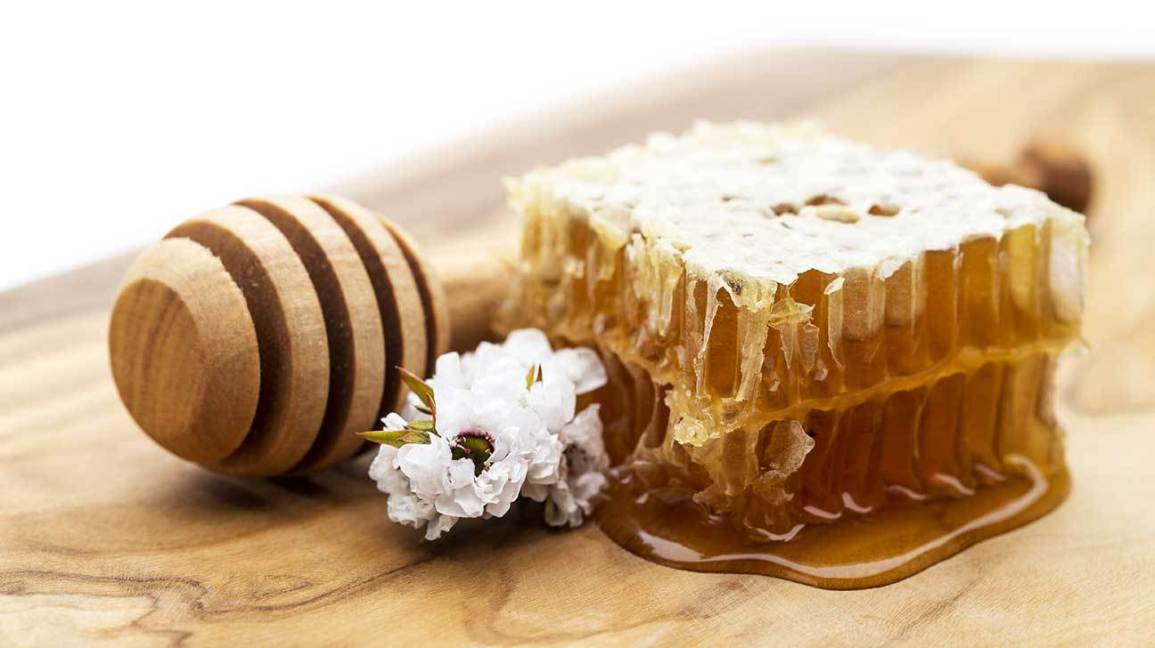While most of us are familiar with the taste of honey, there are many varieties that we haven’t tried. There are actually hundreds of different types around the world–in fact, there are more than 300 in the US alone! This is dependent upon which blossoms the nectar comes from, each producing its own unique flavor, color, aroma, and texture. One such honey is called Manuka honey, hailing from New Zealand. This is a monofloral honey, meaning the nectar comes from a single blossom-the Manuka bush. But how is it made, and what makes it so special?
In order to make honey, we have to start with the bees. It takes thousands of honeybees all working together, and they all have a role: workers, drones, or the queen. The worker bees are all female, and are responsible for almost every job in the hive. The average worker honeybee will make only 1/12 of a teaspoon of honey in its entire life, and honeybees must collectively gather nectar from over two million flowers in order to make just one pound of honey! The nectar taken from blossoms is actually 80-95% water, and only 5-20% sugar, whereas the final honey product is 80% sugar and 20% water. This process occurs as the nectar is passed between the bees, each absorbing a small amount of the water, until the end product is made. The water is also evaporated out as they vibrate their wings, creating heat. Because of this low water content, bacteria cannot survive in honey, which lends medicinal properties and a very long shelf life.
All honey is made in this way, but what makes each unique is where it comes from, and what it is made of. Manuka honey is particularly unique, and highly sought after. It can even cost up to $99 for 100 grams in its purest form, which is more than 100x more expensive than other honeys. This is in part due to how rare the Manuka plant is; while it is found scarcely in Australia, it is primarily only in New Zealand. But in addition to this, the harvest only lasts for 2-6 weeks, and the flower only blooms for 12 days a year.

Because Manuka honey is so rare and unique, there are actually several different grading systems, including UMF and MGO. The UMF grading stands for the Unique Manuka Factor; this certifies the honey is indeed from the Manuka plant, and tests its purity and quality. This system looks for four main compounds: leptosperin, methylglyoxal (MGO), dihydroxyacetone (DHA), and hydroxymethylfurfural (HMF). It is then given a number, from 5+ to 20+, which can be found on all jars of Manuka honey. You may also find the MGO grading, which just looks at the concentration of methylglyoxal; however, MGO can be added to honey, so it does not carry the same weight as the UMF system.
Leptosperin is a chemical directly from the flower of the Manuka plant, and therefore must be present to prove that the honey is in fact Manuka. However, what most people are looking for is how much MGO is present; the higher the number, the better the quality. MGO is the “magic” ingredient in Manuka honey, responsible for its antioxidants and antibacterial properties. For centuries honey has been used to clean and heal wounds, and studies are being conducted to further test how beneficial Manuka honey can be, because of the added bonus of the MGO compound. Manuka honey is also believed to be beneficial for digestive health in addition to immune health.
Compared to other honeys, such as the more commonly available orange blossom honey, Manuka is generally darker and thicker. The taste profile is also quite different, and we decided to run an experiment to test for this variance. The Tec Team recently displayed at the Southeastern Section IFT in Atlanta, and asked the attendees help us in our research. The comments were similar in some ways to what we found, but different in others. The most common comments on the Manuka honey noted its grainy texture, caramel notes, and earthy taste. Some others remarked on a more complex taste, remarking that it would taste good on toast! Orange blossom honey was markedly sweeter, with tangy citrus notes. It was also noted to be smoother and lighter.
Thank you in helping with our research, which we will be continuing at the upcoming IFT in Orlando on Tuesday, January 25. We look forward to seeing everyone, and are excited to continue our taste tests!>